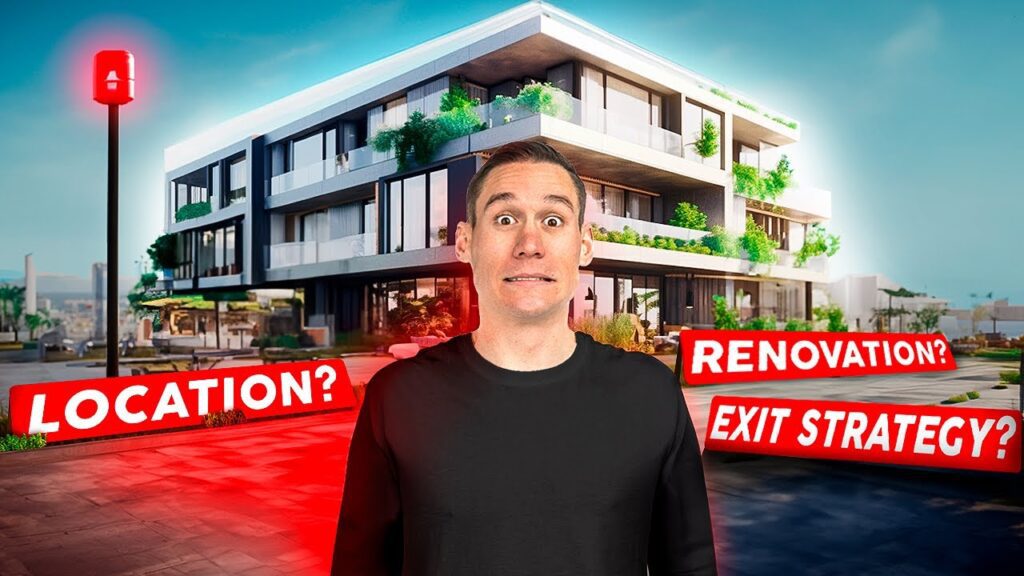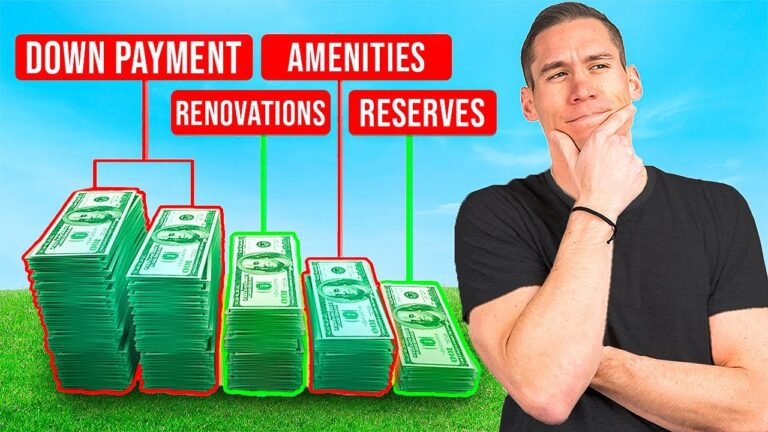Getting into Boutique Hotels is a BIG shift! When I talk to people about how they can make the transition from a hobbyist STR investor to a Boutique Hotel investor, I get a lot of questions about how they take their experience and translate it into skills that will benefit them at the next level. There are a couple of key pieces that we’ll dig into as the framework in this post. And if you can execute within these key areas, then you can absolutely get into Boutique Hotels and bridge that gap into the commercial space – where the deals and the profits are a lot bigger and more lucrative.
There’s so much I wish I would have known before I got started. So to help you get off to a faster start and avoid some common mistakes I’m going to shed light on my experience of buying 6 Boutique Hotels on the things that will benefit you to think about and plan for getting into the Boutique Hotel space. I want to share with you the way I think about the three biggest areas that have the highest impact on Boutique Hotel investing, and what I look for so you can apply them in your way in your setting.
Market Selection
One of the first things to consider is where to buy a Boutique Hotel. The good thing is that Boutique Hotels essentially work anywhere that short-term rentals work.
However, I would be careful of buying Boutique Hotels in rural markets because vacancy can be your silent killer. If you are out in the boonies away from a population center or in an area that has very low travel demand, you’re going to have a tough time filling up your hotel rooms almost no matter how nice they are. Whereas a house out in the middle of nowhere can be a destination because you only have one unit so it’s much easier to find a guest book it. But when you have a lot of rooms, it’s hard to appeal to enough people to fill them all up.
Market factors
There are two main factors I consider with every market I look at:
1) Population Growth
First of all, I want to invest in areas that are growing and with people moving into the area. Because more people coming into the area is going to lead to new business coming in and overall economic growth. I don’t want to buy a Boutique Hotel in a dying town because my hotel would be the next thing to go.
When you buy into appreciating areas, you are riding a wave that lifts you through small issues you may face like operations issues or potential contractor issues on your rehab. On my very first Boutique Hotel deal, I went way over on the renovation budget because of COVID delays, material shortages, a bad contractor – you name it.
But I bought at the beginning of COVID and real estate prices rose like crazy and the market saw growth in demand and travel. That caused the property to appraise higher than I expected and I was able to overcome going over on my budget. You want to invest in growing markets because your equity is going to grow higher and faster and that gives you a buffer on the mistakes you may make. And not only that, but a growing market also leads to rising nightly rates and more travelers, both of which lead to you making more money.
2) The Sources of Tourism (the more the better)
When considering the sources of tourism, I generally rule out areas with only one source that drives demand. Places that rely heavily on business travel are a good example because during the pandemic and the years to follow business travel dried up and the hotels that relied heavily on conferences, business trips, and business events got hurt badly.
The one exception would be destination markets with really strong leisure tourism that are easily accessible to a large population center, generally 1-2 hours outside of a large metropolitan area.
Places that I like are national park markets because they provide consistent demand in drive-to markets. Even when the economy is bad, people go to national parks because it’s a cheap way to vacation. And over the last 3 years, national park visitation has been on the rise.
I also like strong markets outside of metro areas. This could be places like Shenandoah outside of DC, the Poconos outside of Philly and New York, Joshua Tree in Southern California, or Lake Tahoe where I had 2 hotels and is close to Reno, Carson City, Sacramento, and San Francisco. These are the big examples, some of which have become oversaturated, but there are many examples of markets like that all over the country. These are all strong drive-to destinations that have high annual tourist counts. And the bigger the nearby metro area, or the more metro areas in the vicinity, the better.
Now when you are considering a market, it’s important to consider the saturation of the market. You don’t want to go into a place with a bunch of competition that is going to make it hard for you to stand out. But what I want to point out is that even in these “oversaturated markets” it’s usually not the case.
What I have seen is that segments of the market are oversaturated. For example, 3-4 bedroom cabins in the Smoky Mountains. Those have been bought up like crazy recently and are mostly all the same. So if you bought a 3-4 bedroom cabin in the Smokies you’d be competing against thousands of other undifferentiated listings. But 1 bedroom cabins in that market that cater to couples do extremely well. For a fraction of the price to purchase you can proportionally get much higher revenue.
The same can be said for large listings in Panama City Beach. There are thousands of studio and 1 bedroom condo units lining the beach. But there are only a couple hundred 4+ bedroom houses there. And Panama City Beach is a big family destination, so these larger listings do very well comparatively.
So when you are considering a market, know that with buying a Boutique Hotel you are mainly going to have studio or 1-bedroom units. So you want to look at the number of listings of that size in that market to see what the competitive landscape is.
These are some of the things that I consider when looking at a market before investing so that you can bring some context into your own market selection decision. And the big thing for you to take action on is just that, take action. Don’t get analysis paralysis over your market. Decide on your niche, what you are looking for in a property, and in what location (or type of location), and then attack that and you will get deals.
And I wouldn’t be doing my job of trying to bring you guys the most value possible for free if I didn’t give you a boost to get started with this now. Like the little blue arrows that Sonic runs over that shoot him forward. My goal is to provide you with better free content than other people’s paid stuff. So, here is a free mini-course I made to help you scale into Boutique Hotels. It’s a step-by-step of the top of the funnel, is very “look here”, and “do this” and is everything I use to find deals. It goes over how to find and underwrite deals and how you can start to fill the top of your funnel to get your first deal under contract. So go to the link and start to make it happen.
What Type and How Big of a Renovation To Do
To maximize the performance of your hotel you need to know that AMENITIES are what draw people in. And you stand out by providing experience. People book based on the perceived experience they will have by staying in your place based on the amenities you offer. And the best part of this is, you can afford to invest in amenities because you are spreading the cost over multiple units.
Now to choose the design that best suits your hotel and optimize the property from a design and appeal perspective, you have a couple of options. This is how to maximize your performance by creating something “marketable” that stands out from the competition and gets more views, and thus more bookings.
First, I think your market gives you a left and right bound for your design and what you can pull off. For example, a Palm Springs market is going to be more mid-century modern with bold, bright colors. Whereas a Rocky Mountains market is going to fit better to a cabin-like feel with wood and darker colors. Now that’s a generality, and if you do what everyone else in the market is doing, you obviously won’t stand out. But you can use that template and then riff off that design palate to create something cool and unique that’s still true to the market.
OR, you can do something completely unique. Like this property:
By going completely different, you differentiate yourself and make your property “marketable” meaning you have something truly unique, that stands out and drives demand through referrals and reviews. Then you’re marketing is gas on the fire.
The best way I can think to highlight the impact of elevated design and amenities is to give the example of the hotel I am working on now. And it’s a bigger property with 130 rooms and on 10 acres, so I have a lot to work with. But you can take the same strategies and apply them to a smaller property and crush it.
At my new hotel, there are 8 different buildings, and we are doing a unique design in each building. This works because each design palate is going to appeal to a slightly different guest avatar, all while being true to the common design thread that spans the property and allows me to capture bookings from people with different preferences. It will create a unique experience for multiple kinds of people, causing my potential guest pool to expand.
It also intrigues guests who stay at the property, because they’ll be impressed with one design (that’s the intention anyway) and then want to come back to experience a different design on their next stay. It gives them a taste and incentivizes them to come back for more. So guests can stay multiple times and experience something new each time. I’m also investing heavily in the amenities with over $500k in amenity upgrades such as a pavilion with a big seating area, fire pit, and outdoor kitchen. I’ll also add an outdoor pool bar, a pickleball court, putt-putt, more fire pits, an outdoor movie theatre projection screen, a big game room, and a fitness center. So this baby is going to be LOADED! That’s because I understand my guest avatar. And that is the key to this whole piece.
Understanding your avatar unlocks the question of what should renovate, and what quality and amenities to add to your hotel. You want to think about the guests that come to that area – why they travel there, what they do there, how old they are, what they value – and build your guest avatar profile based on those features. By understanding your ideal guest, you create what they would like. Then in your listings and your marketing, you talk to those people. Those are the things that short-term rental investors overlook, and how you establish your competitive advantage to fill up all your rooms at higher rates.
My hotel in the Smoky Mountains is right by the gate to Great Smoky Mountain National Park and it has an overarching avatar of people that travel there AND distinct segments. The overarching avatar is those traveling for recreation. They take vacations, go to the national park, take hikes, have picnics, ride horses and ATVs. There are so many recreational offerings in that area. The natural landscape invites them to come to slow down and enjoy the natural amenities of that area which are the Smoky Mountains, waterfalls, great views, and amazing drives. You can see it now.
The large segments of people within that group are older or retired people coming to take a slow, relaxing vacation (and my hotel is what they call the Peaceful side of the Smokies, which is perfect), families with multiple kids, and couples getaways. So, we have a design plan that fits each segment, and we planned our amenities to appeal to all of them. With 10 acres and a bunch of different amenity options, all of those segments have room to sprawl out and enjoy the property and the natural amenities of the local area with our proximity to them.
THAT is the level of detail that sets you apart from your competition and makes it clear for you, based on your guest avatar, which direction to take your hotel.
How to Think of Your Exit Strategies
Where your mind naturally wanders when getting into a new investment strategy is how you make sure that you’ll be able to make money in the long run. Or how you can exit the property if things get a little shaky. Your exit strategy is a big consideration.
However, like many other things, you can overanalyze and be timid, or research enough to get comfortable with the risk and act. You probably know which one I choose, and I’ve gone full cycle on 4 deals so I’ve seen the exits play out. And the good news for you is, that there are buyers out there. And that buyer pool is getting larger. How the exits play out depends on the purchase price.
Properties under $1,000,000 can appeal to a wider potential buyers list with smaller, less experienced buyers. But you are going to deal with headaches, a lot of questions, and not necessarily a certainty of close because the buyers who try to buy properties in that range might be stretching and don’t have enough experience or cash to be confident buyers (typically). And this post and all my content is to help you not be those people.
Any big, experienced investors with capital behind them don’t typically invest in deals that small. So your best chance (in my opinion) is with a deal that is $1,000,000 or up. And this is on the sale side, after the renovation and you’ve added the value – so that’s not that hard to do. Because you can buy for under $1,000,000 from unsophisticated investors who leave a lot of meat on the bone and then you push up the value to increase the size of your
In the price range above $1,000,000, you are going to get looks from more experienced investors with deeper pockets. They are usually experienced and professional buyers which makes the transaction much easier for you. You or your broker don’t have to hold their hand. They want the deal, they can afford the deal, and so they buy the deal.
Here’s a little story to highlight this. I sold both of my Panama City Beach deals on the market. At first, we tried listing them separately thinking they’d fetch higher individual prices than if grouped. However, we found out that separately they were too small for bigger investors yet too big for smaller investors. As a result, they didn’t get a lot of offers.
After we realized that, we packaged them together and offered them together as one purchase. That resulted in more attention because now it was in the size range that a professional investor could buy with a team in place and operate remotely. Another reason I like slightly bigger deals where you can get economies of scale on the buy side is because when you add value and improve the property you’ll have more buyers who can buy that kind of property. That’s because it’s an operating business and not something they have to do all the work on. People don’t buy 2, 3, or 4-million-dollar properties to do the work themselves.
How Boutique Hotels trade is based on their net operating income (NOI) and the cap rate. Commercial property value is the NOI divided by the cap rate. So a property with $100k in NOI at a 10% cap rate is worth $1,000,000. To maximize the value of your property and get the highest value at your exit, either a refinance or a sale, you focus on maximizing your NOI before that liquidity event.
In the 12 months leading up to that liquidity event, you want to increase the income as much as you can while controlling all of your operating expenses, which improves your NOI and increases the value of your property. And if you have a well-running Boutique Hotel with a team in place that a new buyer can come in and operate with that team and not have to do everything themselves, then you’ll have buyers. I would say expect an 8-10% cap rate at your exit for a nice, stabilized Boutique Hotel. That can change lower or higher by the market but that’s a good range.
Another very important consideration for your exit strategy is to think about the growth and popularity of Boutique Hotels and how that’s grown as an asset class over the last year. A year or two ago, I didn’t know anyone else buying Boutique Hotels because no one really was yet. Fast forward another 3-5 years and you are going to see a lot more STR investors scale into the commercial space, so the buyer pool is likely going to be much bigger which will create more demand and compress cap rates. People will be willing to pay more for Boutique Hotels.
If you underwrite conservatively now, you’ll likely top your projected sales price years in the future when you go to sell. There are buyers out there now for efficiently operated independent Boutique Hotels and there will be even more in the future so don’t over-analyze your exit strategy where there might be a lack of data today because growing demand is going to lead to a super profitable exit for you down the road. If you see it, if it’s logical, and if the numbers make sense – other buyers will see the same.
Those are the three biggest areas that have the highest impact on Boutique Hotel investing and how I approach them. I believe that if you apply these to your investment approach you will be prepared to find the right deal, take it down, and operate it successfully until you can make a big exit one day. And these are the things that will help snowball one deal into two, and then three, and so on. Leave any comments or questions if you have them and I’ll be sure to write you a response!




